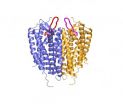(Press-News.org) New York, NY, October 6, 2010 – In recognition of the 20th anniversary of the enactment of the Americans with Disabilities Act (ADA), the October issue of Disability and Health Journal has brought together a series of articles to examine whether the ADA has in fact improved the health of people with disabilities. Areas of progress are identified, most notably acknowledging physical barriers and need for better staff training and communication about and with people with disabilities. However, there continue to be ongoing challenges, including recurrent barriers to health care for people with disabilities, discrimination in health care decisions against people with disabilities, limited health insurance coverage, and, in general, poorer health care, and health for people with disabilities.
"When the ADA was enacted 20 years ago, we had not fully identified that there were differences in health and health care for people with disabilities," commented Margaret A. Turk, M.D., Co-Editor, Disability and Health Journal and Professor, Physical Medicine & Rehabilitation and Pediatrics SUNY Upstate Medical University, Syracuse, NY. "Research since 1990 has identified that there are differences, and has tried to clarify which of these differences in the health status of people with disabilities can be attributed to health care access, universal design principles, care provider knowledge, or social justice. We continue to actively pursue these areas of research to address and hopefully further resolve these issues."
The issue describes how the ADA can be and has been used to promote the health of people with disabilities.
CONTENTS & KEY POINTS
Editorial: Has the ADA Improved the Health of People with Disabilities?
Margaret A. Turk, M.D.
Yes, somewhat. The contributors hope that the articles in this issue will prove useful in making changes within facilities, institutions, staff, and social interactions, as well as provide a first step to improving access at all levels to promote the health of people with disabilities.
Introduction
Timothy P. Shriver, Ph.D.
This dedication to Eunice Kennedy Shriver, a longstanding advocate for improving environmental, program, and social access for people with disability, is contributed by her son, Dr. Timothy Shriver.
This article has been made freely available as a service to the health care community at:
http://www.disabilityandhealthjnl.com/article/S1936-6574(10)00046-4/fulltext
The Surgeon General's Call to Action to Improve the Health and Wellness of Persons with Disabilities: Historical Review, Rationale, and Implications 5 Years after Publication
Richard H. Carmona, M.D., M.P.H., F.A.C.S., Margaret Giannini, M.D., F.A.A.P., Brian Bergmark, B.A., and Jennifer Cabe, M.A.
The authors provide a history of early legislation leading to the ADA, and then a further forward history from the ADA to the 2005 Call to Action. Dr. Richard Carmona, U.S. Surgeon General in 2005, developed this Call to Action to further the understanding that disability does not equate with poor health.
Health Care under the ADA: A Vision or a Mirage?
Nancy R. Mudrick, M.S.W., Ph.D., and Michael A. Schwartz, J.D., Ph.D.
Drs. Mudrick and Schwartz focus on the past 10 years of ADA enforcement related to health, and highlight the many barriers the deaf community encounters. The settlements associated with these and other health access issues show the effectiveness of the ADA, but also the enforcement choices of the Department of Justice.
This article has been made freely available as a service to the health care community at:
http://www.disabilityandhealthjnl.com/article/PIIS1936657410000610/fulltext
The California Kaiser Permanente Health System: Evolving to Meet the Needs of People with Disabilities
M. Elizabeth Sandel, M.D., Jed Appelman, Ph.D., Mary Jean Kotch, M.S.N., C.R.R.N.-A., Gina Biter-Mundt, M.A., Nitasha Lal, M.P.H., Shari Samuels, B.A., and Yvette Crespo
The Kaiser Permanente Health System's response to an ADA lawsuit and settlement has resulted in a model approach to providing health care to people with disabilities by recognizing barriers at all levels. Their leadership in this area has been recognized nationally and internationally, along with their willingness to share developed products and practices.
The ADA in Action at Health Care Facilities
Molly F. Story, Ph.D., June I. Kailes, M.S.W., and Christie Mac Donald, M.P.P.
This survey of medical centers and staff covers compliance with the ADA, conducted through their consulting work to advise medical centers in decreasing barriers for people with disabilities receiving health care. They provide guidance and recommendations for equipment, interior design, and staff training and policies.
Achieving Accessible Health Care for People with Disabilities: Why the ADA Is Only Part of the Solution
Silvia Yee, L.L.B., B.Mu.S., M.A., and Mary Lou Breslin, B.A., M.A.
The authors outline the limitations of the ADA regarding improvements in health care for people with disabilities. They posit that lawsuits and other judicial policy tools have only a narrow focus to create change, and that changes in the social view of disability and public policy are needed to renovate the health care system for people with disabilities.
In the introduction to this issue Timothy P. Shriver, Ph.D., Chairman & CEO of Special Olympics, writes about the vision and legacy of his mother, Eunice Kennedy Shriver, and applauds the editors and contributors to the issue. He states, "No act of care is too small to matter; no moment of healing too small to go unnoticed. Your dedication to fulfilling the ideals of the ADA for all Americans is the fuel that keeps us all going. Your contributions to this volume are a resounding reminder that there are still heroes among us."
INFORMATION:
These articles are published in Disability and Health Journal, The Official Journal of the American Association on Health and Disability, Volume 3, Issue 4 (October 2010) entitled "ADA 20th Anniversary: Update on Health Care Services for People with Disabilities," published by Elsevier.
STANFORD, Calif. - An alarming number of adolescents already battling eating disorders are also intentionally cutting themselves, and health-care providers may be failing to diagnose many instances of such self-injury, according to a new study from Stanford University School of Medicine and Lucile Packard Children's Hospital.
The researchers found that 40.8 percent of patients with eating disorders in their study had documented incidents of intentionally harming themselves, most often by cutting and burning. What's more, the study suggests that inadequate clinical screening ...
Transgenic corn's resistance to pests has benefitted even non-transgenic corn, a new study led by scientists from the University of Minnesota shows.
The study, published in the Oct. 8 edition of the journal Science, found that widespread planting of genetically modified Bt corn throughout the Upper Midwest has suppressed populations of the European corn borer, historically one of corn's primary pests. This areawide suppression has dramatically reduced the estimated $1 billion in annual losses caused by the European corn borer, even on non-genetically modified corn. Bt ...
LA JOLLA, CA – October 4, 2010 – Researchers have determined the structure of a protein that helps guide blood-forming stem cells, or hematopoetic stem cells. The protein is also one of the main receptors used by the human immunodeficiency virus (HIV) to get inside blood cells.
The findings are described in the October 7, 2010 issue of the journal Science.
The structure offers a detailed view of how the cell surface receptor, called CXCR4, interacts with molecules outside the cell. The results have implications for developing new drugs for hematopoetic stem cell transplantation, ...
VIDEO:
This model shows how HIV, in gray, might latch on to immune cell receptor molecules, allowing the virus to enter and infect the cell. The viral protein, gp120, shown in...
Click here for more information.
In a technical tour de force, structural biologists funded by the National Institutes of Health have determined the three-dimensional structure of a molecule involved in HIV infection and in many forms of cancer. The high-resolution structure sheds light on how the ...
Washington, DC/Beijing, China (7-8 October 2010)—A new study released today in Washington, DC and Beijing suggests that one of the world's largest and "greenest" paper companies, in concert with local officials and other middlemen, used illegal means to gain control over thousands of hectares of Chinese forestlands, with a goal of acquiring 120 thousand hectares for a eucalyptus plantation in the Guangxi Autonomous Region of southern China.
The authors say their research shows that the middlemen, acting on behalf of Finnish paper and pulp manufacturer Stora Enso, often ...
For the first time, biologists have described the evolution of the size of a female trait which males use to choose a partner. The research, published in the open access journal BMC Evolutionary Biology, shows that male cichlid fish prefer females with a larger pelvic fin and that this drives females to grow fins out of proportion with their body size.
Sebastian Baldauf from the University of Bonn, Germany, worked with a team of researchers to study the effects of female ornamentation in the African cichlid fish Pelvicachromis taeniatus. He said, "In contrast to the ...
Ultrasound can speed the healing of fractures. A randomized controlled trial reported in the open access journal BMC Musculoskeletal Disorders has found that the use of low-intensity pulsed ultrasound (LIPUS) in patients with tibial fractures which showed inadequate progress toward healing resulted in 34% greater bone mineral density (BMD) in the fracture area after 16 weeks than use of a sham device.
Jon E. Block, Ph.D. worked with a team of researchers from University Hospital Marburg and the University of Ulm, Germany, to test LIPUS in 51 patients and 50 controls. ...
Scientists from the Max Planck Institute for Chemical Ecology in Jena, Germany, have solved a case of fraud that has been pending for 40 million years. Arum palaestinum, also called the Solomon's lily, attracts drosophilids (vinegar flies) as pollinators by emitting odor molecules that resemble those produced during alcoholic fermentation of rotting fruit initiated by yeast. The plant accomplishes the illusion of yeast simply by producing six chemicals that - together in a specific mix - create the impression of fermentation in the fly brain. The produced volatiles include ...
The Georgia Tech Information Security Center (GTISC), a national leader in information security research and education, today announced the release of the GTISC Emerging Cyber Threats Report for 2011, outlining the top three areas of security risk and concern for consumer and business Internet and computer users. The report was released today at the annual GTISC Security Summit on the Evolving Nature of Cyber Security Threats. The summit gathers leading industry and academic leaders who have distinguished themselves in the field of cyber security.
According to the report, ...
MADISON – Widespread planting of genetically modified Bt corn throughout the Upper Midwest has suppressed populations of the European corn borer, a major insect pest of corn, with the majority of the economic benefits going to growers who do not plant Bt corn, reports a multistate team of scientists in the Oct. 8 edition of the journal Science.
In Wisconsin, 75 percent of the $325 million cumulative economic benefit linked to Bt corn's pest suppression between 1996-2009 went to non-Bt corn growers. Wisconsin currently has about 3.9 million corn acres, with approximately ...


